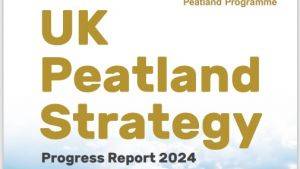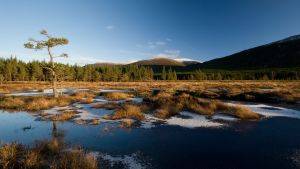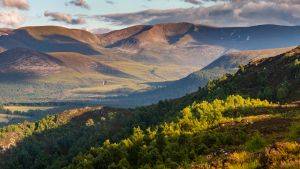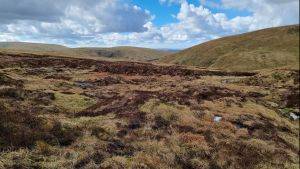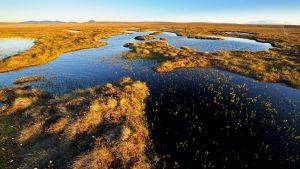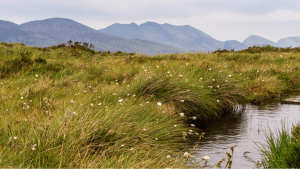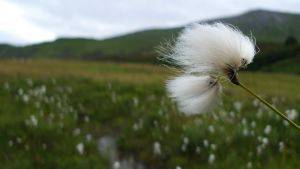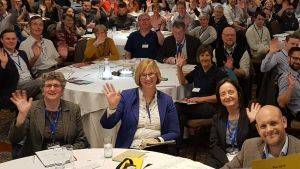Sphagnum farming Paludiculture on degraded bogs in Germany
Introduction
A pilot project in Lower Saxony shows that producing Sphagnum biomass as an alternative to extracting fossil peat for ‘growing media’ (horticultural potting soil) may help reduce the loss of pristine bog ecosystems.
Description
To cover the growing demands from world-wide urbanisation, the cultivation of vegetables, fruits and flowers takes place in pre-prepared growing media, consisting mainly of slightly humified peat (‘white peat’) which is built up in natural bogs by Sphagnum species . Extracting this fossil resource destroys raised bogs and their associated ecosystem functions, including carbon storage and water regulation. As a result, the stocks of white peat in most countries of western and central Europe are largely depleted, and living bogs have become so rare that the few remaining examples are strictly protected. As the availability of peat becomes limited, the growing media industry is forced to source it from ever more remote areas. Thus there is an urgent need to develop sustainable alternatives for peat not only from ecological but also from economic and social point of view. The most promising alternative is Sphagnum biomass. Its use as a raw material for growing media in modern professional horticulture has been successfully tested and in some cases demonstrates even better results than the peat-based substrates developed over many years.
Project Aims
Within 10 years this project could demonstrate that Sphagnum farming in Germany is possible and promising. Methodologies have been developed for both: - land-based cultivation on degraded bogs (i.e. formerly used as pasture or meadow and after peat extraction) - water-based Sphagnum cultivation on artificial floating mats on water bodies, resulting from peat, sand and lignite extraction. As a result, a cultivation mosaic on different degraded peatland sites is conceivable. Substituting all of the white peat consumed in German horticulture (ca. 3 million m³ per year) would require Sphagnum farming on ca. 40,000 ha. Considering there is more than 120,000 ha of bog grassland in Lower Saxony alone, this target seems achievable. Up-scaling the Sphagnum farming process is the next big challenge for the project. Follow the progress on www.sphagnumfarming.com
Restoration Delivered
In spring 2011, the research team, set up by the university and peat industry, established an almost 5 ha large industry scale pilot site on agricultural bog grassland near Rastede (Lower Saxony, Northwest Germany). To do this, the team removed the upper topsoil, which was strongly degraded, and installed a water management system for irrigation and drainage. They then introduced Sphagnum diaspores with a manure spreader mounted on a former snow groomer (photo 1). After 1.5 years Sphagnum palustre, S. papillosum and S. fallax covered 95% of the area with an average lawn height of 8.3 cm (maximum 22.4 cm). The field site has already demonstrated the feasibility of large scale Sphagnum farming (see photo 2) and now enables the team to develop methodologies and machines to upscale the cultivation and harvest of Sphagnum biomass.
Site Activity
The cultivation and harvest of Sphagnum biomass (Sphagnum farming) aims to replace fossil peat in horticultural growing media with a renewable raw material. In contrast to conventional drainage based agricultural use or peat extraction, wet cultivation, known as paludiculture, maintains the peat body as a carbon store. In cooperation with various research and industrial partners, Greifswald University has spent the last decade studying Sphagnum farming, including diaspore recruitment, plant establishment, optimisation of site conditions, productivity, and regeneration after harvest.
Project Name: Sphagnum farming Paludiculture on degraded bogs in Germany
Organisation / Lead partner: University of Greifswald
Predominately: Upland

